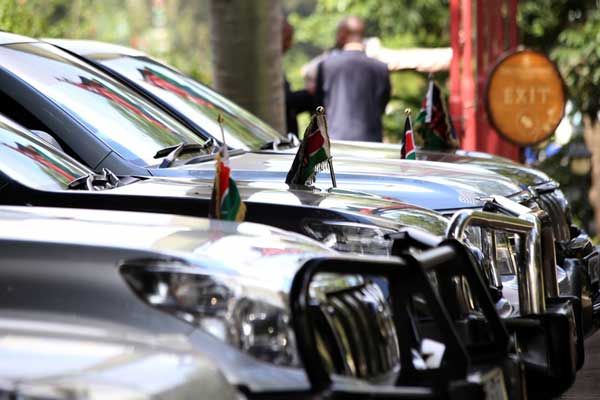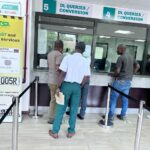In Kenya, ensuring that county and national government vehicles meet safety and compliance standards is a critical responsibility. The National Transport and Safety Authority (NTSA) oversees the motor vehicle inspection process, ensuring that public sector vehicles are roadworthy and compliant with regulations. For government entities, navigating the inspection process can seem daunting, but with the right guidance, it’s straightforward and efficient. This comprehensive guide covers everything you need to know about applying for motor vehicle inspections for county or national government vehicles in Kenya, including step-by-step instructions, costs, timelines, and key considerations for 2025.
Whether you’re a fleet manager for a county government or an administrator for a national government institution, this article will equip you with the knowledge to streamline the inspection process, ensuring compliance with NTSA regulations. Let’s dive into the details of how to apply for vehicle inspections, the types of inspections available, and practical tips to make the process seamless.
Understanding the Importance of Vehicle Inspections for Government Entities
Vehicle inspections are a cornerstone of road safety in Kenya, particularly for county and national government vehicles that serve critical public functions, such as emergency services, public transport, and administrative operations. The NTSA mandates inspections to ensure vehicles meet safety, environmental, and operational standards. Non-compliance can result in penalties, grounded vehicles, or even accidents that jeopardize public safety.
For government entities, inspections are not just a legal requirement but also a matter of public trust. Well-maintained vehicles reflect the government’s commitment to efficiency and safety. The NTSA’s eCitizen platform has digitized the application process, making it easier for county and national government entities to book inspections and manage compliance.
Why Inspections Matter for Government Vehicles
- Safety: Ensures vehicles are roadworthy, reducing the risk of accidents.
- Compliance: Meets NTSA and Kenya Bureau of Standards (KEBS) requirements.
- Public Trust: Demonstrates accountability in managing public resources.
- Operational Efficiency: Prevents downtime due to non-compliance or mechanical issues.
Types of Vehicle Inspections for County and National Government Vehicles
The NTSA offers four main types of inspections for government vehicles, each serving a specific purpose. Understanding these categories is essential for selecting the appropriate inspection type during the application process.
1. Annual Inspection (PSV and Commercial)
- Purpose: Required for Public Service Vehicles (PSVs) and commercial vehicles to ensure they remain safe and compliant throughout the year.
- Frequency: Conducted annually.
- Focus: Checks brakes, lights, tires, and other critical components.
2. Change of Particulars Inspection
- Purpose: Required when there’s a change in vehicle ownership, usage, or other registered details.
- Examples: Updating vehicle records after a transfer or modification.
- Focus: Verifies that updated details align with NTSA records.
3. Compliance Inspection
- Purpose: Ensures vehicles meet specific regulatory standards, such as those set by KEBS or other authorities.
- Examples: Verifying adherence to emission standards or safety features.
- Focus: Compliance with legal and environmental regulations.
4. New Motor Vehicle Registration Inspection
- Purpose: Conducted for newly acquired vehicles before they are registered for use.
- Focus: Confirms that the vehicle meets Kenyan standards for roadworthiness and documentation.
Each inspection type is tailored to ensure that government vehicles meet the necessary standards for safety and compliance, making it critical to select the correct option when applying.
Step-by-Step Guide to Applying for Vehicle Inspection on eCitizen
The NTSA has streamlined the vehicle inspection process through the eCitizen platform, a one-stop digital portal for government services in Kenya. Below is a detailed, step-by-step guide to applying for motor vehicle inspections for county or national government vehicles.
Step 1: Log in to Your eCitizen Account
- Visit the eCitizen portal at ecitizen.go.ke.
- Log in using your government entity’s credentials. If you don’t have an account, register one using the entity’s official details.
- Ensure you have a stable internet connection to avoid disruptions during the process.
Step 2: Navigate to the Inspection Tab
- Once logged in, locate the “Inspection” tab on the eCitizen dashboard.
- This tab is dedicated to NTSA services, including vehicle inspections.
Step 3: Select Motor Vehicle Services
- Scroll down and select the “Motor Vehicle” option, then click “View.”
- This will display all available motor vehicle services, including inspection options.
Step 4: Choose the Inspection Type
- Select the appropriate inspection type based on your needs (e.g., Annual, Change of Particulars, Compliance, or New Vehicle Registration).
- Double-check that the selected type matches the vehicle’s requirements to avoid delays.
Step 5: Submit and Pay the Inspection Fee
- After selecting the inspection type, submit your application.
- Proceed to the payment section, where you’ll be prompted to pay the inspection fee of Ksh. 1,050.
- Payment can be made via mobile money (e.g., M-Pesa), credit/debit card, or bank transfer, depending on the options available on eCitizen.
Step 6: Book an Inspection Slot
- Click “Book Now” to select your preferred inspection center and date.
- NTSA operates multiple inspection centers across Kenya, including Nairobi, Mombasa, Kisumu, and Nakuru. Choose a center convenient for your entity.
- Confirm the booking by clicking “Complete Booking.”
Step 7: Download and Print Receipts
- Go to the “Application History” section on eCitizen to download your payment receipt and booking slip.
- Print both documents, as they are required during the inspection.
Step 8: Attend the Inspection
- On the booked date, present the vehicle at the selected NTSA inspection center.
- Carry the printed booking slip and payment receipt, along with any additional documents (e.g., logbook, previous inspection reports).
- Ensure the vehicle is clean and in good condition to facilitate a smooth inspection process.
Step 9: Receive Inspection Results
- The inspection is typically completed on the same day, with results issued immediately upon passing.
- If the vehicle fails, you’ll receive a report detailing the issues that need to be addressed before re-inspection.
Inspection Fees and Timeline
Fees
- Inspection Fee: Ksh. 1,050 per vehicle, regardless of the inspection type.
- Payment Method: Payable through the eCitizen platform via mobile money, card, or bank transfer.
- Additional Costs: Be prepared for potential re-inspection fees if the vehicle fails the initial check.
Timeline
- Processing Time: Inspections are typically completed on the same day, provided the vehicle meets all requirements.
- Booking Availability: Slots are subject to availability at the chosen inspection center, so book early to secure a convenient date.
- Re-inspection: If a vehicle fails, repairs must be made, and a new inspection booked, which may extend the timeline.
Key Considerations for a Smooth Inspection Process
To ensure a seamless inspection process for county or national government vehicles, consider the following tips:
- Prepare the Vehicle: Ensure the vehicle is in good condition, with functional brakes, lights, tires, and other critical components. Address any known issues before the inspection.
- Verify Documentation: Carry all required documents, including the logbook, previous inspection reports, and proof of payment.
- Check Equipment Status: Recent reports indicate that some NTSA inspection centers, such as those in Nakuru and Kisumu, use obsolete equipment, leading to manual inspections. Confirm the status of your chosen center to avoid surprises.
- Book Early: Inspection slots can fill up quickly, especially in busy centers like Nairobi. Plan ahead to secure a convenient date.
- Compliance with KEBS Standards: For vehicles imported from countries like Japan, ensure pre-inspection by bodies like the Quality Inspection Services Japan (QISJ), as mandated by KEBS.
- Monitor Application Status: Regularly check the eCitizen portal for updates on your application or booking status.
Challenges in the Vehicle Inspection Process
While the NTSA has made strides in digitizing the inspection process, challenges persist, particularly for government entities managing large fleets. Some common issues include:
- Obsolete Equipment: Auditor-General reports highlight that at least 10 NTSA inspection centers, including Nakuru, Kericho, and Kisumu, rely on outdated equipment, leading to manual inspections that may be less reliable.
- Pending Bills: Counties like Nairobi owe significant amounts in legal fees, which could strain budgets for vehicle maintenance and inspections.
- Booking Delays: High demand for inspection slots, especially in urban centers, can lead to delays if not booked early.
- Documentation Errors: Incomplete or incorrect documentation can result in rejected applications or failed inspections.
To mitigate these challenges, government entities should maintain accurate records, allocate sufficient budgets for inspections, and leverage the eCitizen platform’s efficiency to streamline the process.
Post-Inspection Steps
Once a vehicle passes inspection, the NTSA issues a certificate of compliance, which is valid for the specified period (e.g., one year for annual inspections). Follow these steps after inspection:
- Register the Vehicle: For new vehicles, complete registration with the NTSA to obtain a registration number and pay applicable fees.
- Insure the Vehicle: Secure insurance coverage to comply with legal requirements and protect against liabilities.
- Maintain Records: Keep inspection certificates, receipts, and other documents in a secure location for future reference.
- Schedule Regular Maintenance: Regular servicing prevents issues that could lead to failed inspections in the future.
Applying for motor vehicle inspections for county or national government vehicles in Kenya is a straightforward process when using the NTSA’s eCitizen platform. By following the outlined steps—logging into eCitizen, selecting the inspection type, paying the Ksh. 1,050 fee, and booking a slot—government entities can ensure their vehicles remain compliant and roadworthy. Understanding the types of inspections, preparing vehicles adequately, and addressing challenges like equipment limitations or booking delays are key to a smooth process.
As Kenya continues to prioritize road safety and efficient public service delivery, timely vehicle inspections are a non-negotiable responsibility for county and national government entities. By staying proactive and leveraging digital tools like eCitizen, fleet managers can uphold safety standards, maintain public trust, and ensure operational efficiency. For the latest updates on NTSA services or to apply for an inspection, visit ecitizen.go.ke and take the first step toward compliance today.





